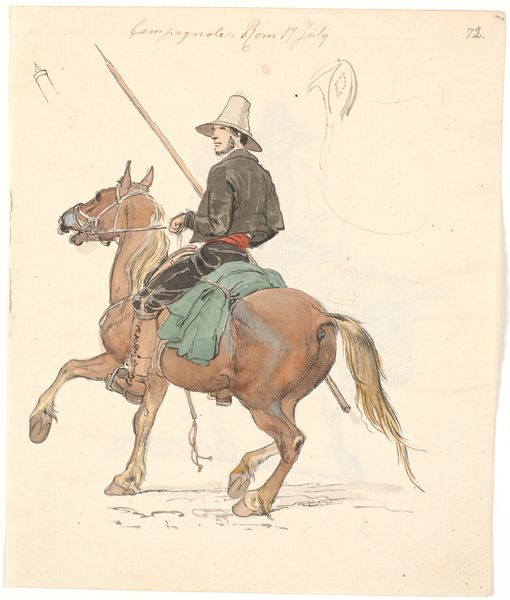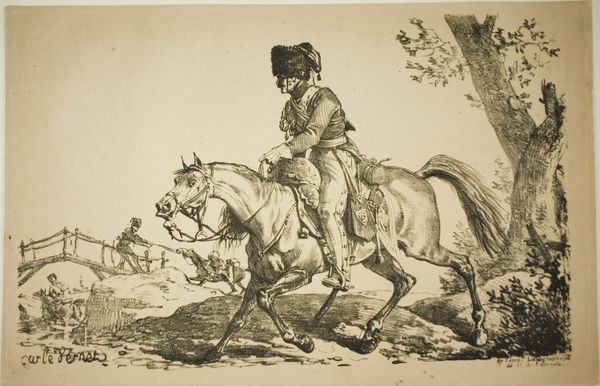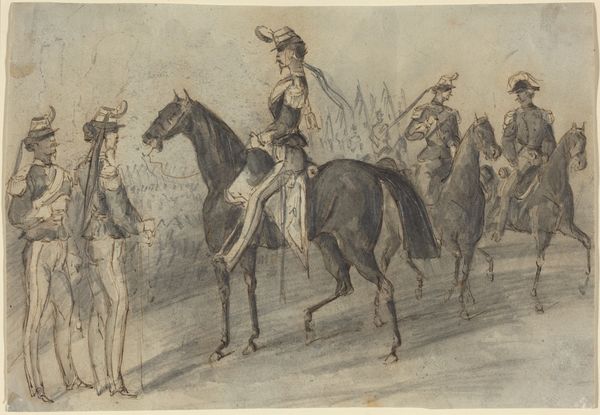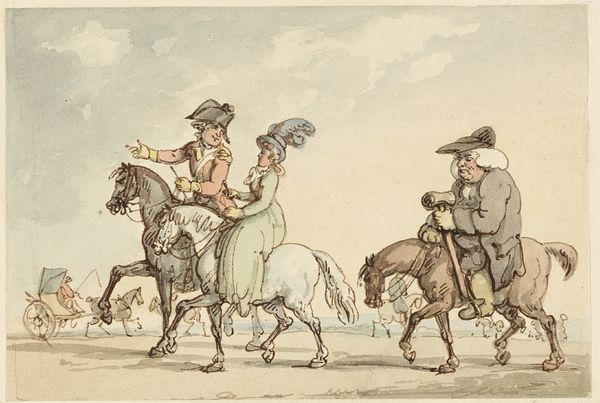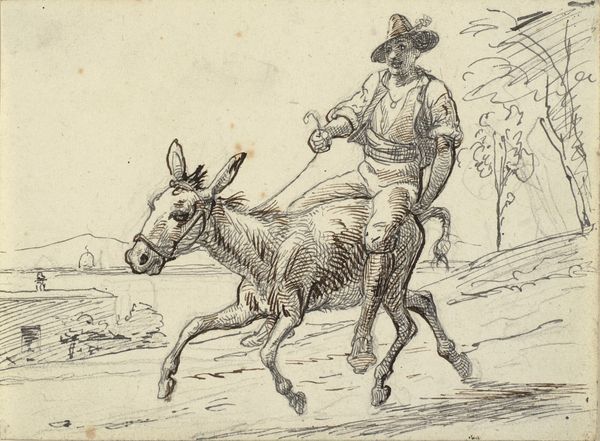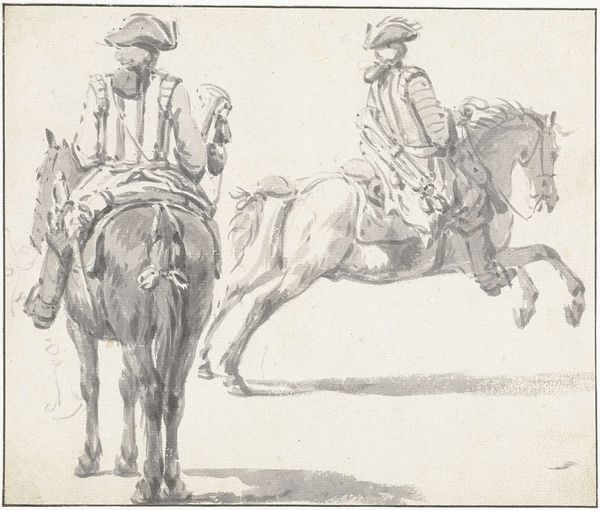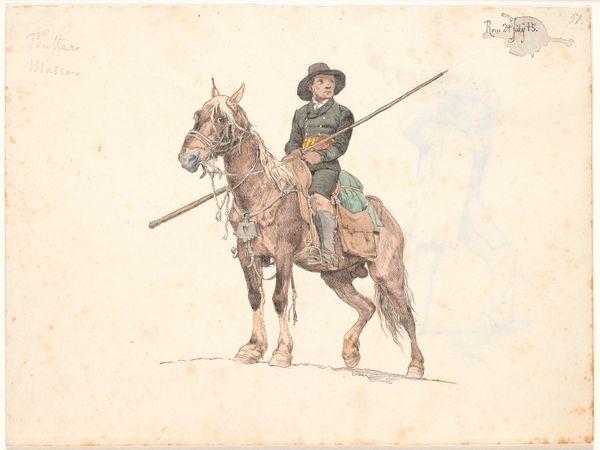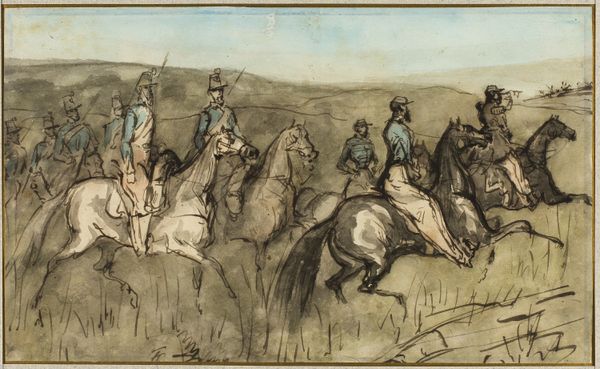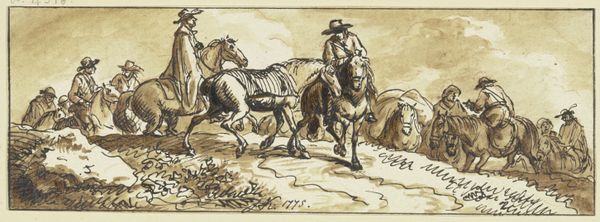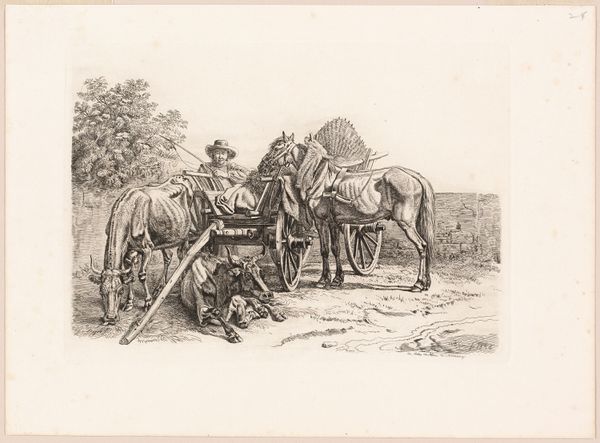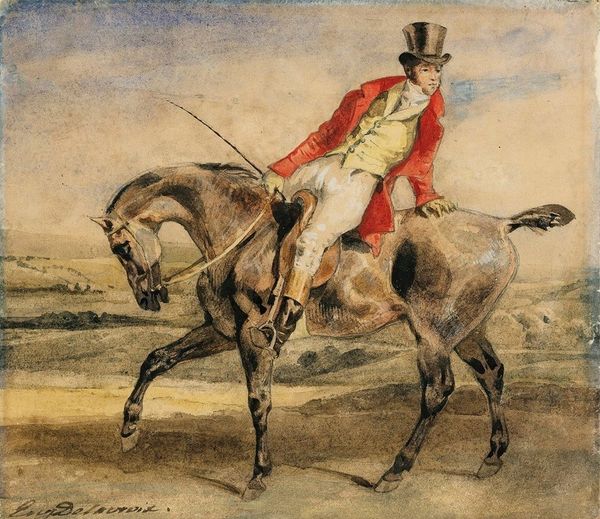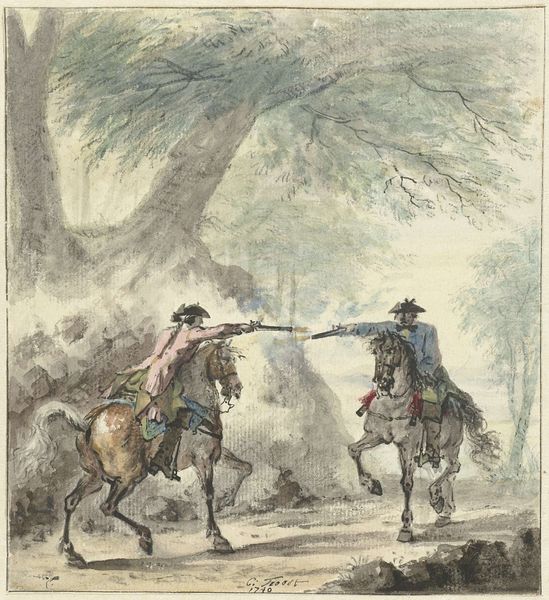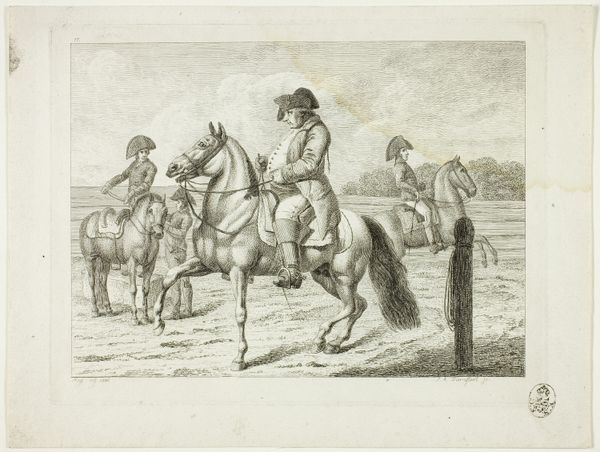
Copyright: Public Domain: Artvee
This watercolor was made by Wilhelm Marstrand in the 19th century. Watercolors are fascinating because of how immediate they are. The artist mixes pigment with water, and then applies it directly to paper. This method allows for an incredible range of expression, from delicate washes to bold, saturated strokes. Look at how Marstrand has used the fluidity of the medium to capture the dusty landscape and the figures on their donkeys. The thinness of the paint allows the white of the paper to shine through, creating a sense of light and air. Notice how the artist has employed the technique of layering, building up the colors gradually to create depth and form. Paintings such as this were made in a tradition separate from high art, with the purpose of recording the world as seen by the artist. Marstrand used materials in a way that perfectly matched the aesthetic he was aiming to achieve. It’s a reminder that materials, making, and context are crucial to our understanding of art.
Comments
No comments
Be the first to comment and join the conversation on the ultimate creative platform.
